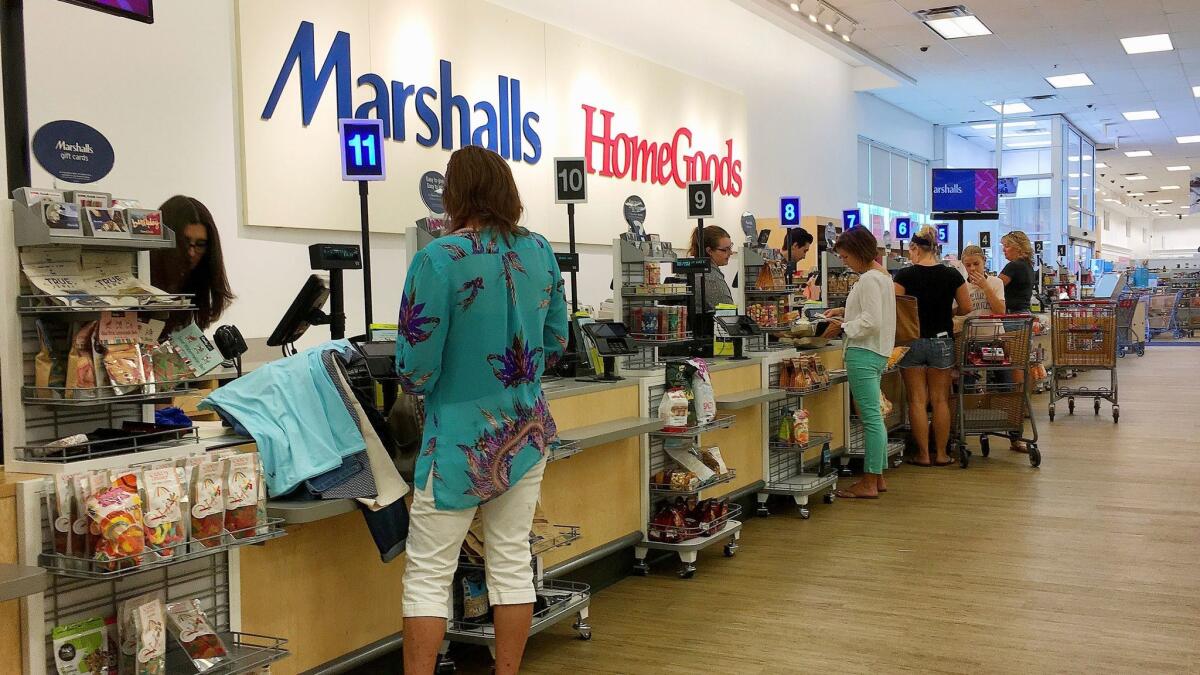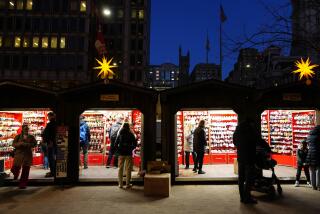U.S. retail sales slide 0.3% in May, the biggest drop in 16 months

Americans cut spending at gas stations, department stores and electronics shops in May as retail sales registered their biggest drop in 16 months, a cautionary sign for the economy.
The Commerce Department said Wednesday that retail sales dropped 0.3%, the first decline since February and the sharpest since a 1% decrease in January 2016. Economists had expected sales to increase slightly in May after rising 0.4% in April.
Last month, furniture and home furnishings stores were up 0.4% from April. Clothing and clothing accessories stores saw a bump of 0.3%.
Sales fell 2.8% at electronics stores, the biggest such drop since March 2016. They fell 2.4% at gasoline stations and 1% at department stores, which have struggled with competition from online retailers, especially over millennial shoppers.
“I think big-box [stores] are going to continue to struggle until they reinvent themselves,” said Ron Friedman, a partner and co-head of retail and consumer products at accounting and advisory firm Marcum.
Shopping areas will increasingly need to bring in eateries to attract customers, who might then find it convenient to browse through the stores after a meal, he said.
“I think the idea of just getting in the car and going shopping may not happen as much,” Friedman said.
The retail industry’s cyclical nature makes month-over-month comparisons less meaningful, said Paula Rosenblum, co-founder and managing partner at Retail Systems Research.
“It’s a seasonal business,” she said. “There really is not any basis to presume that month-over-month retail sales will continue up in a linear fashion.”
Instead, year-over-year comparisons are a more accurate measurement of the industry’s health, she said.
Over the past year, retail sales have risen a solid 3.8%, according to the Commerce Department.
Building material, garden equipment and supplies dealers saw a 10.8% rise compared with the same month last year. Nonstore retailers, which includes online shopping and mail-order houses, were up 10.2%.
“By any reasonable measure, the industry is healthy,” Rosenblum said.
Economists have said they think consumer spending, which accounts for about 70% of U.S. economic activity, will pick up in the spring and summer after a slow start to 2017. A slump in consumer spending early this year is a key reason the economy expanded at only a lackluster 1.2% annual pace in January through March.
The Trump administration has said it can accelerate economic growth to 3% a year by cutting taxes, loosening regulations and pouring money into roads, bridges and other infrastructure projects.
But President Trump’s agenda has been held up by political turmoil and a lack of details from the administration. And economists are skeptical that Trump could overcome longer-term problems that weigh on economic growth, including an aging workforce and a slowdown in worker productivity.
Times staff writer Samantha Masunaga contributed to this report.
ALSO
As other malls die off, this one in Arcadia focuses on Asian shoppers
Up to 25% of U.S. shopping malls may close in the next five years, report says
Shoppers got obsessed with discounts during the recession. Stores are still paying the price
UPDATES:
9:50 a.m.: This article was updated with comments from Ron Friedman and more data from the Commerce Department.
8:15 a.m.: This article was updated with comments from Paula Rosenblum.
This article was originally published at 6:55 a.m.






